Carbonates: Rhodochrosite (manganese or raspberry spar)
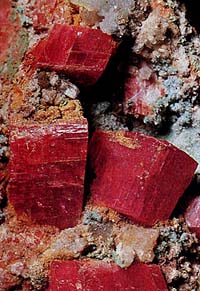 Diagnostic card.
Diagnostic card.
Rhombohedral crystals of rhodochrosite in the parent rock. From the state of Colorado, USA. The crystals are typically orange-pink in color, due to the presence of manganese.
Mn CO 3
The trigonial trigonometric system
Hardness 3,5-4
Specific weight 3,3-3,7
Cleavage is perfect
Crack irregular
Color pink, orange-pink
Color in powder white
Glitter from glass to pearly

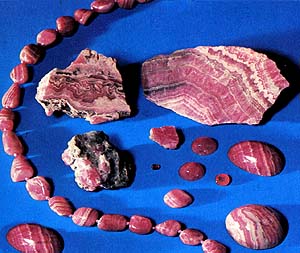 Rhodochrosite is manganous, or crimson, spar, the "Inca Rose". The name of the stone received for its color (from the Greek rhodon - rose); Synonyms - by composition, color or location. Units have a banded structure - an alternation of dark and light pink bands with a scalloped pattern. Glitter is glass, on the planes of cleavage - pearly.
Rhodochrosite is manganous, or crimson, spar, the "Inca Rose". The name of the stone received for its color (from the Greek rhodon - rose); Synonyms - by composition, color or location. Units have a banded structure - an alternation of dark and light pink bands with a scalloped pattern. Glitter is glass, on the planes of cleavage - pearly.
The most popular are the crimson-red varieties. The most famous deposit is in Drentine, near San Luis. Here in the abandoned Incas from the XIII century. Rhodochrosite stalagmites are known for silver mines. The number of jewelry stones entered only since 1950. Recently, new deposits have been discovered - in Argentina (Kapillitas, near Andalgala, and Catamarca to the south of Tucuman) and in the USA (Colorado). Usually used in large ore; It is in them that the expressiveness and beauty of the drawing is felt. This decorative ornamental stone used to make vases or boxes, sometimes it makes cabochons and beads. Externally you can be confused with rhodonite.
Occurs in the form of microcrystalline aggregates of granular or continuous addition, as well as concretion masses of a concentric or stalactite structure. It is mostly opaque. The color may be pink, lilac-pink, yellowish-pink, and the color is distributed fairly evenly. Often clusters of rhodochrosite are covered with a brown-black coating of manganese oxides (oxidation products), which hide the inherent in the mineral glass and pearlescent shine, which appears on the cleavage planes.
Exceptionally rare and nevertheless gorgeous are well-formed crystals. They are slightly translucent or transparent and only occasionally completely transparent. These can be rhombohedra with distinct endings or scalenoders. There are both individual crystals, and magnificent druses, intensely painted in orange-pink or red.
Diagnostic signs.
Rhodochrosite can be confused with rhodonite (manganese silicate of pink color); With tulit containing manganese (silicate of alumina and calcium, also red); As well as with pink calcite. From the latter, rhodochrosite differs by reaction with hydrochloric acid only when heated (calcite reacts with very dilute hydrochloric acid in the cold). A small hardness distinguishes rhodochrosite from rhodonite and tulit. Does not melt, becomes fissured and acquires a greenish color. Behavior in acids. Quickly soluble in hot HCl (with strong effervescence).
Origin.
Occurs in ore-bearing hydrothermal veins as a result of the action of hydrothermal fluids (gases) on host rocks containing manganese. Very rarely rhodochrosite has a sedimentary origin.
Place of Birth.
A typical hydrothermal Butte field in the state of Montana (USA) is interesting to find in it the continuous differences of massive addition. They are represented, in addition, in other places, especially in Argentina. In the state of Colorado (USA) there are good crystals, which can sometimes be granulated. Beautiful thanks to the transparency and coloring of the specimens found in Hotazel in South Africa.
Application.
This mineral, when present in sufficient quantities, is mined on an industrial scale as an ore for manganese. It is used as a reducing agent in metallurgy and for the production of special steels.
Use in jewelry.
Rare, transparent specimens are treated with steps with few facets of a rectangular or octagonal shape. Massive differences of rhodochrosite are sharpened in the form of balls for necklaces, cabochons or bracelets. In these cases, you can achieve a variety of geometric and color effects, limiting the accumulation of the mineral in parallel or perpendicular to the elongation of the crystals.
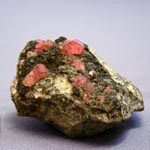
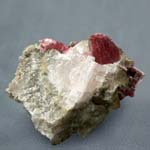
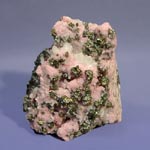
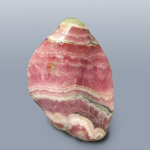

Rhodochrosite (strawberry, or manganese, spar), is manganese carbonate. Glitter is glass. Transluces. Colors: pink, less often gray, brown. The line is white. The fracture is uneven, stepped, less often conchoidal. It's fragile. Cleavage is perfect. It forms in hydrothermal veins. Crystals (trigonal system) are crayons. The aggregates are shpatopodobnye, dense, radial-radiant. An important ore of manganese. Painted ores are used as an ornamental stone. Deposits: Freiberg, Saxony (Germany), Yugoslavia, Hungary, Romania, CIS, USA.
Rhodochrosite is also known under the almost out of use name "manganese spar" From the chemical point of view, rhodochrosite is manganese carbonate. It is not accidental that it is also called manganese spar. The name was given to him in 1813 by the German mineralogist FG Gaussmann, who studied manganese minerals, and in Greek means "the color of the rose." It is also known under the almost-obsolete name "manganese spar". In the East, rhodochrosite was called the "stone of the dawn". There are, however, raspberry, brown and even almost colorless rhodochrosites. The greenish rhodochrosites are a bit like malachite. Rhodochrosite is considered a beautiful and inexpensive ornamental stone. Its hardness is somewhat lower than that of a rhodonite similar to it. Rhodochrosite often cuts various ornaments.
On the international market of collection material, successful samples of rodohryzita are valued above gold of equal weight. In 1992, an ore with several rhombohedra of thick cherry translucent rhodochrosite up to 12 cm from the Home, Sweet Home mine in the state of Colorado (USA) was demonstrated at the international fair in Denver (USA); It was sold for 250 thousand dollars.
Rhodochrosite (MnCO3) in its pure form is very rare in nature. Usually a part of manganese in rhodochrosite is replaced by iron and calcium, and also by magnesium, zinc, cobalt. Usually rhodochrosite is found in the form of continuous granular or coarse-grained masses, accumulations of spherulites. Rhodochrosite is known for a long time. It often accompanies ore sulphides in hydrothermal veins along with quartz, barite and other vein minerals; Is also found in sedimentary deposits of manganese ores.
Rhodochrosite deposits exist in Argentina, Hungary, Germany, USA. In Argentina, in the ancient silver mines of the Incas, unique stalactites from rhodochrosite are found. It is no accident in South America, rhodochrosite is known under the name "roses of the Incas". In Russia, rhodochrosite deposits are discovered in Transbaikalia and the Urals. Rhodochrosite, produced in Mongolia, is characterized by the purest pink coloration.
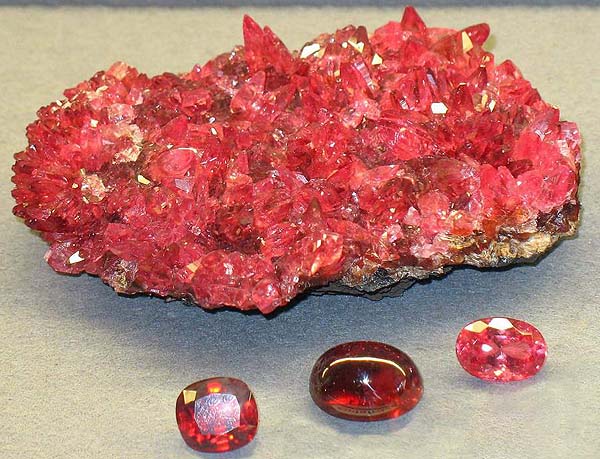
A brush of rhodochrosite crystals and jewelry made from it (a deposit in South Africa).
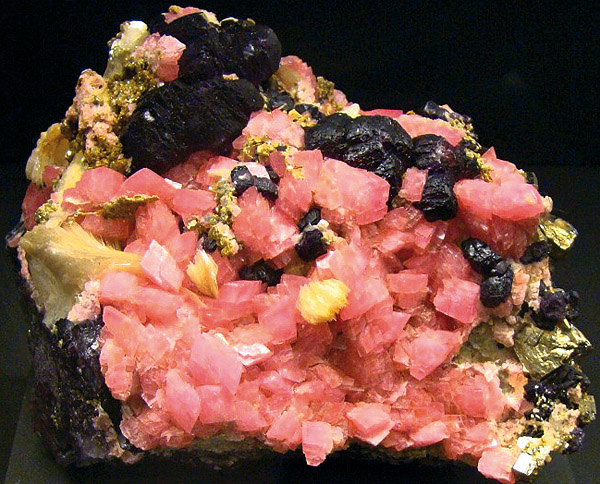
Rhodochrosite (pink), bertrandite, fluorite. East. Kounrad, Pribalkhash, Kazakhstan, the CIS.

A large crystal of pink rhodochrosite on quartz. China.
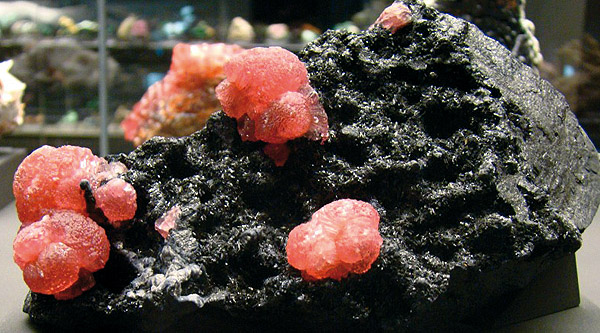
Rhodochrosite (pink), manganite. SOUTH AFRICA.
ADR 5.1

Substances that are oxidized
Risk of violent reaction, ignition or explosion if exposed to flammable or flammable substances
Do not allow the formation of a mixture of cargo with flammable or combustible substances (eg sawdust)
Yellow diamond, ADR number, black flame above the circle
ADR 4.2

Substances that are capable of self-ignition
Risk of fire due to autoignition in the event that the packaging is damaged or the source of the contents has occurred.
Can react violently with water
White upper half of diamond, red - lower, equal, ADR number, black flame
ADR 4.1

Highly flammable solids , self-reactive substances and solid desensitized explosives
Risk of fire. Flammable or combustible substances can ignite from sparks or flames. May contain self-reactive substances capable of exothermic decomposition in the case of heating, contact with other substances (such as: acids, heavy metal compounds or amines), friction or impact.
This can lead to the emission of harmful or flammable gases or vapor or spontaneous combustion. Containers can explode when heated (over-dangerous - practically do not burn).
Risk of explosion of desensitized explosives after loss of desensitizer
Seven vertical red stripes on a white background, equal in number, ADR number, black flame
ADR 8

Corrosive (corrosive) substances
Risk of burns from skin corrosion. They can react violently with each other (components), with water and other substances. The substance that spilled / crumbled can emit a corrosive vapor.
Dangerous to aquatic environment or sewer system
White upper half of diamond, black - lower, equal, ADR number, test tubes, hands
ADR 9

Other dangerous substances and articles
Risk of burns. Risk of fire. Risk of explosion.
Dangerous to aquatic environment or sewer system
Seven vertical black bars on white background - top, white - lower half of diamond, ADR number
ADR 4.3


Substances that emit flammable gases in contact with water
Risk of fire and explosion if exposed to water.
The cargo, which crumbled, must be covered and kept dry
Blue and blue diamond, ADR number, black or white flame
| The name of a cargo that is particularly dangerous for transportation | room
UN |
Class
ADR |
| MARGANZA (II) NITRATE | 2724 | 5.1. |
| Manganese (IV) oxide | 1479 | 5.1. |
| Manganese ethylene-1,2-bisdithiocarbamate MANEB or MANEBA PREPARATION, which contains not less than 60% maneb | 2210 | 4.2 |
| MARGANZA RUBBER | 1330 | 4.1 |
| Manganese sulfate, solution | 3082 | 9 |
| Manganese phosphate | 3260 | 8 |
| Manganese ethylene-1,2-bisdithiocarbamate, stabilized against self-heating MANEB STABILIZED or MANEBA | 2968 | 4.3 |
| STABILIZED AGENT against self-heating | 2968 | 4.3 |
| MANEB or MANEBA PREPARATION, which contains at least 60% maneb | 2210 | 4.2 |
| MANEB STABILIZED OR MANEBA STABILIZED STABILIZED AGAINST HEAT REFRIGERATION | 2968 | 4.3 |
| MANITGEXINATRATE (NITROMANITE) HYDROGEN with a mass fraction of water or a mixture of alcohol and water of at least 40% | - | - |
- Ghetchellit - "New Almaden blend" - arsenide and antimony sulfide (modern sulfosol)
- Antimony is a toxic metal (semimetal) , widely used in metallurgy, medicine and engineering
- Zirconium - a rare and undiscovered metal and the most dangerous precious stone in oxide and salt
- Gold - yellow dangerous and poisonous metal of modern accurate digital and cable technologies
- Sulfur is a golden-yellow toxic substance and a sign of active volcanic activity
- Cadmium is an undisputed toxic silvery metal unknown to a wide range of people
- Lead - a poisonous gray imitator of metallic silver and toxic metal blende
- Arsenic is a classic poison of medieval and modern poisoners and medicine in medicine
Poisonous and radioactive dangerous stones and minerals
** - poisonous stones and minerals (mandatory check in the chemical laboratory + explicit indication of toxicity)
** - radioactive stones and minerals (mandatory check on the standard dosimeter + ban on open sales in case of radioactivity exceeding 24 milli / g / h + additional measures of population protection)
Catalog of minerals and semi-precious stones of the world by groups
** - poisonous stones and minerals
** - radioactive stones and minerals


Comments
When commenting on, remember that the content and tone of your message can hurt the feelings of real people, show respect and tolerance to your interlocutors even if you do not share their opinion, your behavior in the conditions of freedom of expression and anonymity provided by the Internet, changes Not only virtual, but also the real world. All comments are hidden from the index, spam is controlled.